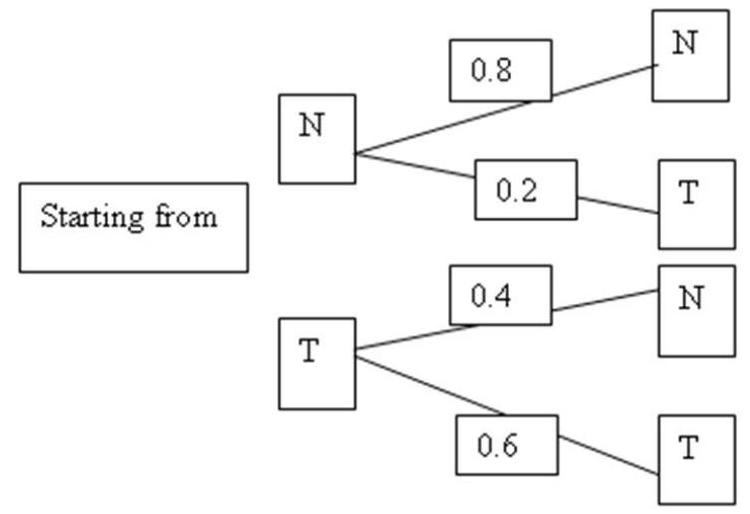Multiple Choice
Newsweek and Time are two competing weeklies, each of which tries to keep their readership while trying to get the other's readers to switch. Among all the households holding yearly subscription to Newsweek or Time but not both, let and denote the states that a household is a current Newsweek or Time subscriber, respectively. The probabilities of switching from one state to the other after one transition (when they renew) are given by the tree diagram. (For simplicity, it may be assumed that all annual subscriptions expire on December 31st of the year and are renewed by all of them for one or the other but not both magazines for one year.) If the current number of households subscribing for Newsweek and Time is, respectively 2000 and 3000, what would be the number of subscribers to Newsweek after one renewal?
A) 0.80
B) 1600
C) 2800
D) 2200
Correct Answer:

Verified
Correct Answer:
Verified
Q17: XYZ Inc. hires only retired people
Q18: The states in a Markov system are
Q19: An absorbing state in a Markov system
Q20: XYZ Inc. hires only retired people
Q21: Judy Jones purchases groceries and pop
Q23: XYZ Inc. hires only retired people
Q24: In Markov systems, the probability of
Q25: If there are only two absorbing states
Q26: Judy Jones purchases groceries and pop exactly
Q27: XYZ Inc. hires only retired people